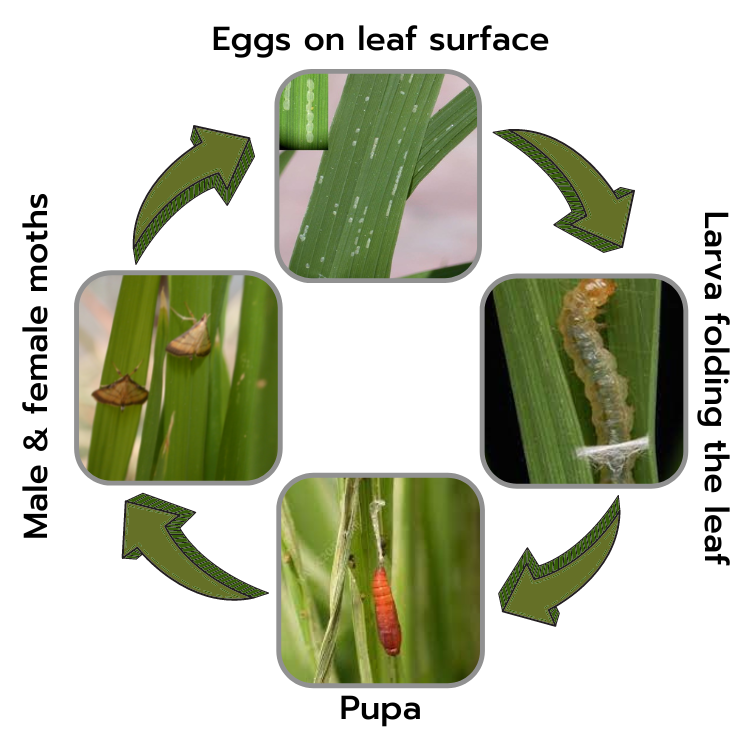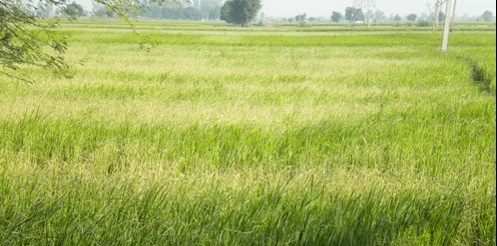
Eggs are deposited singly or in rows of 3-8, preferably on the upper surface of the leaf. Each moth lays about 155 eggs and hatch in 4 days. Immediately after hatching, neonate larvae move down to the unopened leaf at the center of the plant and feed gregariously by scraping the green matter.
From second instar onwards, larva becomes solitary; folds the leaves by stitching with silken threads, keeping open both the ends of the fold. Larval development is completed in about two weeks passing through five instars. Larva is green in colour and can be easily distinguished by the presence of a pair of black spots/patches on the abdominal region near the head .
Pupation occurs mostly at the base of the plant and a single leaf was folded for pupation. Pupal period ranges between 6 and 9 days.
Adult moths survive for about a week to ten days. Adult female moth is golden yellow in colour with dark brown margins on both the wings. Male moths have prominent patch of dark brown andraconial scales along the midcosta of forewing.

Damage is observed in all the stages of crop growth. Larva folds the leaf and feeds by scraping the green matter staying within the fold. This feeding results in the development of longitudinal white streaks. In case of severe infestation, the leaf margins and tips are dried up entirely and the crop gives a whitish scorched appearance. Usually a single larva is found in each fold. The folding and feeding by leaf folder larvae affects the photosynthetic ability of the leaf resulting in yield reduction. The damage to the flag leaf is considered more serious due to its effect on grain filling and direct impact on grain yield (Padmavathi et al, 2013).
Avoid excessive use of nitrogen fertilizers.
Apply nitrogenous fertilizers, especially urea in 3 - 4 split doses.
Remove weeds as they act as alternate hosts.
Release of egg parasitoids, Trichogramm chilonis. Releases are made five to six times @ 1,00,000 per hectare starting from 15 days after transplanting. Tricho cards containing 1000 parasitised eggs are to be stapled to the underside of leaves at 100 points uniformly distributed across 1-hectare area.
Parasitoids and predators that feed on eggs, larvae and pupae of leaf folder are present naturally in rice fields in abundance. These natural enemies have to be conserved to reduce leaf folder damage. Hence, avoid spraying insecticides up to 30 days after transplantation.
Do not apply insecticides that cause resurgence of rice leaf folder (Carbofuran, Phorate, Imidacloprid, Thiamethoxam)
If there are two freshly damaged leaves with larva inside the fold, spray any of the following chemicals:
Cartap hydrochloride 50 WP/SP @ 400g (or) Chlorantraniliprole (Rynaxypyr) 18.5 SC @ 60 ml (or) Acephate 75 WP @ 250 g per acre.
If the crop is at tillering stage, apply Chlorantraniliprole 0.4G @ 4 kg per acre.